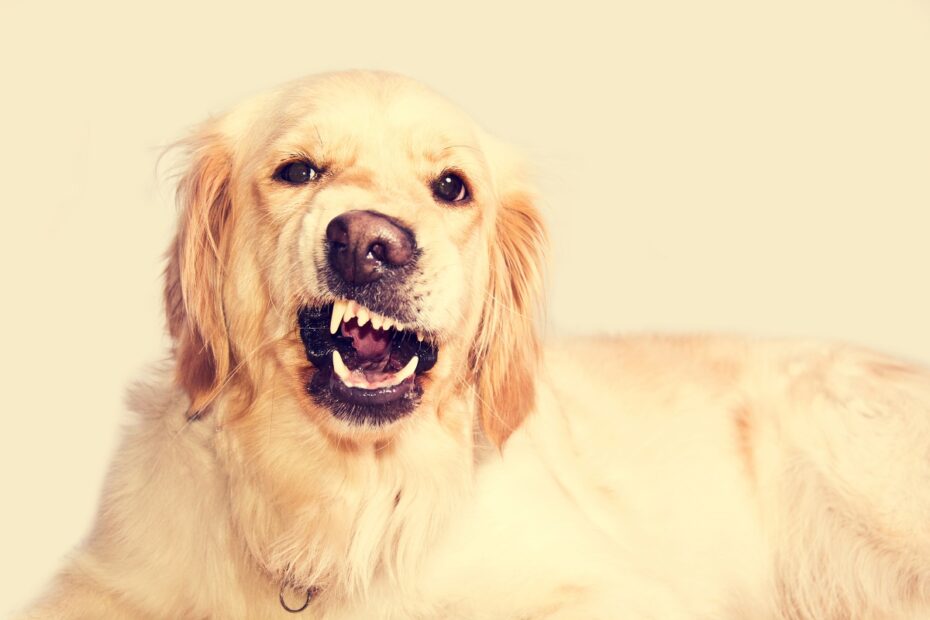If you’re thinking about putting down an aggressive dog …this is the most important page you’re ever going to read.
In some cases, euthanasia may seem like the only option. Although it’s rare, the level of aggression in some dogs will never be manageable.
Not only do such dogs pose a danger to others. But it’s also likely the extreme management methods needed to control their behavior will greatly reduce their quality of life.
In other cases, alternative strategies may be available to control the problem while maintaining your dog’s enjoyment of life.
Although your veterinarian can help you come to a decision, that decision is yours alone to make.
Sometimes, euthanasia might be the kindest option. But before coming to any conclusions, it’s vital to consider every possible option.
In some cases, there might be management strategies available that you haven’t yet tried.
I’m a firm believer that inside every dog is a good dog, and inside every good dog is a great dog.
This is also why I feel you first owe it to your dog (and to yourself) to explore every possible option before making a permanent, irreversible decision.
So before considering putting down your dog, I highly recommend taking a look at the Dog Calming Code from Dan Abdelnoor over at The Online Dog Trainer. (see video below)
It’s not a guaranteed solution for your dog’s aggressive behavior, and it’s not going to solve the issue overnight. But if you’ve tried and failed before to stamp out the aggressive tendencies in your dog then this could be the missing piece of the puzzle.
Here’s the link to take a look: Click Here To Discover How To Finally Stop Your Dogs Unwanted Aggression… Even If You’ve Tried & Failed Before!
(video will open in a new window)
Reasons Dogs Can Become Aggressive
Once you’re able to better understand what could be driving your dog’s behavior, you should find it easier to move forward in a constructive way.
Although every dog is unique, most cases of aggression stem from a handful of common causes. These include:
Fear
Fear is by far the most common reason for aggressive behavior.
The causes are numerous – the dog may have been improperly socialized. They may have suffered abuse or experienced some other kind of trauma. Or they may have been attacked by another dog in the past.
Typically, fear-based aggression will only be seen in very specific situations – i.e. if the dog feels threatened or in danger and isn’t able to escape.
Resource Guarding
Dogs place a high value on certain things. This could be a toy, their food, or even a person.
If another dog or person tries to get too close to their cherished possession, they may lunge, snap, or even bite the transgressor.
It’s a natural instinct that, from an evolutionary perspective, makes perfect sense. Back in the days when they had to hunt their food, a dogs’ survival depended on their ability to protect their lunch from theft.
Despite centuries of domestication, that instinct is still going strong. Left unchecked, resource guarding can quickly escalate from growls and snaps to serious physical attacks.
Illness
If your dog has only recently become aggressive, an illness may be to blame.
Certain ailments such as sensory impairment, tumors, hormonal imbalances, hypothyroidism, seizures and epilepsy, neurological problems, hyperkinesis, and neoplasia can all make a normally placid dog suddenly start lashing out.
Older dogs may also experience cognitive issues that can cause behavioral problems.
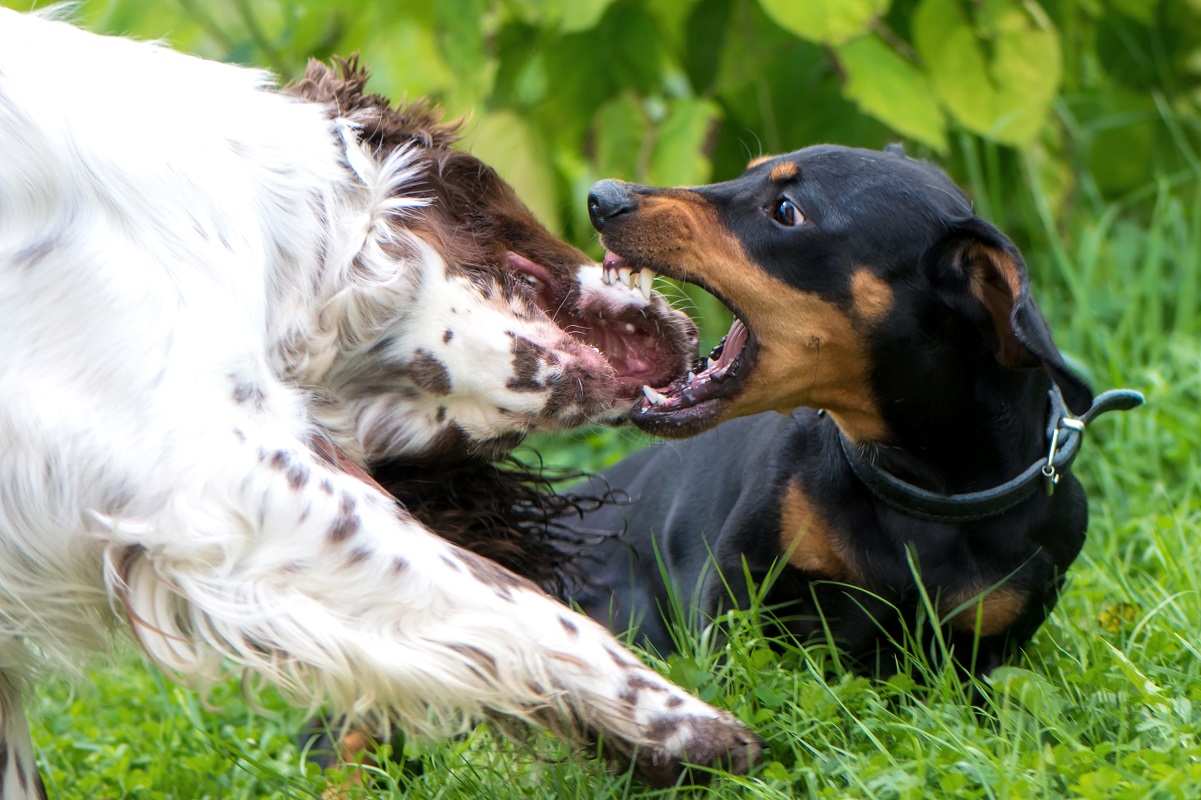
Redirected Aggression
Redirected aggression is the canine equivalent of a kid lashing out on their best friend after a scolding from their teacher.
Essentially, it’s a form of frustration. Your dog wants to get to something they can’t (the mailman at the door, the cat up the tree), so they take out the frustration on the nearest available target.
If you have a multi-pet household, they usually lash out at another dog. However, they might also direct their frustration at you or a member of your family. Usually, it’s a case of whoever’s closest, loses.
Anxiety
We might think we have a monopoly on stress and anxiety, but we really don’t.
If there’s something about a dog’s environment that’s making them nervy or anxious (maybe you’ve recently moved house or welcomed a new pet or baby). They might start displaying uncharacteristically aggressive behavior.
Social Aggression
It’s not impossible for dogs to live side-by-side in perfect harmony, but before they can do that, they need to establish a pecking order.
Usually, dogs in multi-pet households will quickly work out where they stand in the pack hierarchy.
Problems can break out if you have two or more dogs of very similar status. Until they decide which of them is the more dominant, they’re likely to keep duking it out.
Territorial Aggression
Like most animals, dogs are territorial by nature. While this can usually be nipped in the bud with early training, it can develop into a serious problem if allowed to go unchecked.
While all dogs have the potential for this kind of aggression, it’s particularly apparent in breeds like the Bull Mastiff, Doberman Pinscher, Rottweiler, Giant Schnauzer, and German Shepard.
Leash Aggression
Leash aggression is a very specific and surprisingly common type of aggression that can turn a normally placid, mild-mannered dog into the Hulk.
It will be apparent only during leashed walks and will typically be directed at other dogs.
It’s usually caused by either fear (your dog feels threatened by another dog, but as the leash prevents them escaping, they put on a display of aggression instead).
Or frustration (you dog really wants to say hello to every dog it meets, but that darned leash won’t let them).
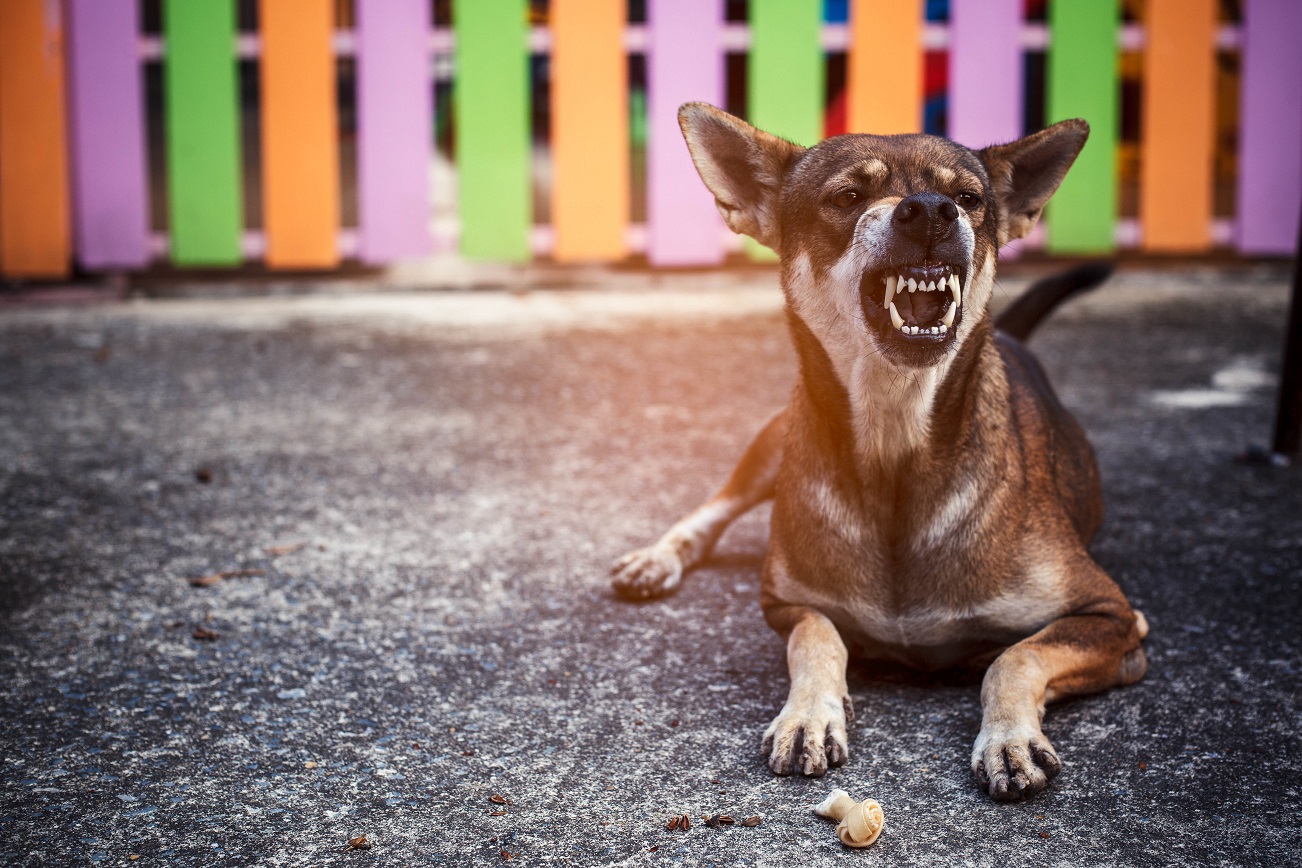
Things to Consider Before Putting Down an Aggressive Dog
Deciding whether euthanasia is the best option or whether it’s worth continuing management measures is a decision only you can make.
As you’re taking stock, be prepared to consider…
How Predictable is the Aggression?
The more predictable the aggression, the better. If a dog displays warning signs before becoming aggressive, you can learn to predict their behavior and understand their triggers.
Predictable behavior can usually be managed by addressing the underlying causes and reducing the dog’s exposure to triggering situations while training is ongoing.
Dogs that do not display any warning signs and that do not demonstrate a pattern to their aggression can be very difficult to manage.
Most owners are unlikely to ever feel safe around the dog, which will typically resort to keeping them in isolation.
In these cases, it’s vital to consider the impact on their quality of life.
How Aggressive Are They?
Sometimes, it can be hard to take a step back and consider things objectively.
But in order to make the right decision, you need to be able to make a fair assessment of just how aggressive your dog actually is.
If you don’t feel able to do this alone, it’s worth enlisting the help of a professional dog behaviorist.
Typically, the level of aggression will be judged according to the following matrix:
Level 1:
Aggression is limited to snarling and growling, with no physical contact.
Level 2:
The aggression has escalated to physical contact, but bites are not forceful enough to break the skin.
Level 3:
The bite is hard enough to break the skin but not forceful enough to penetrate beyond the length of the dog’s tooth.
Level 4:
Bites are forceful enough to penetrate further than the length of the dog’s tooth, and are accompanied by a clamping action and shaking.
Level 5:
The dog bites forcefully and in rapid succession.
Level 6:
The attack is forceful and sustained enough to be lethal.

The Size of Your Dog
This may sound trite, but size really does matter when it comes to aggression.
Ultimately, a nippy Chihuahua is a very different proposition to a nippy Bullmastiff.
A large breed can kill. A small breed is unlikely to do much damage.
Even if a small dog and a large dog have similar tendencies, the consequences are vastly different.
Considering the size of your dog in your decision isn’t ‘breedist’: it’s necessary.
Your Situation
This decision isn’t just about your dog. It’s about you. Whatever conclusion you come to, it needs to be the right decision for both you AND your dog.
Unfortunately, that means being painfully honest about things in a way that isn’t going to be easy.
Think about…
The Cost
Managing a dog with serious behavioral problems can be as much of a drain on your finances as it is on your emotions.
Severe aggression isn’t always something you’re going to be able to manage alone. You may need to work with behavior consultants who rarely undercharge for their services.
Your Household
If you have children or other pets, how does your dog’s aggression impact them?
If your dog’s behavior puts other members of your household at risk, you may need to separate or isolate the dog.
How will this affect their quality of life?
Time
Managing an aggressive dog is time-consuming. Do you have the time in your day to give them what they need in terms of exercise, affection, and everything else, while still managing their aggression?
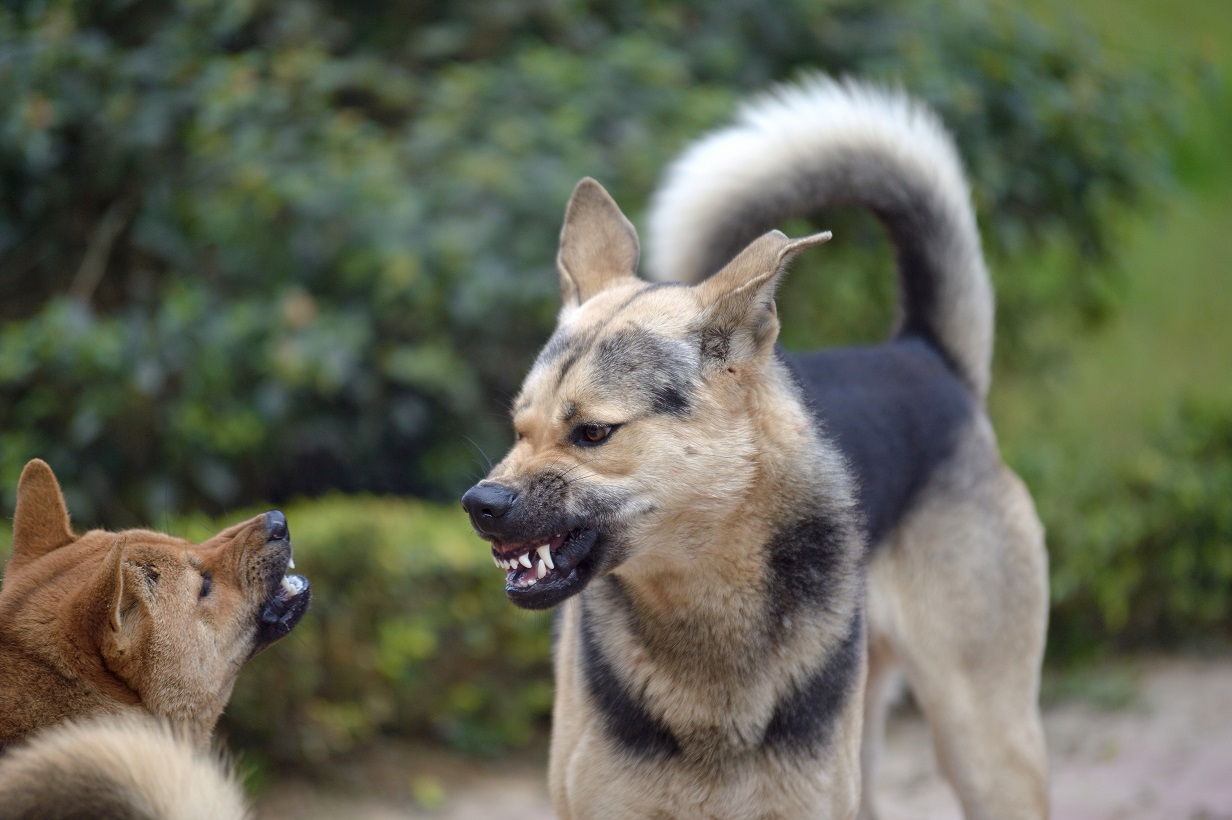
How To Stop Your Dog Being Aggressive
Euthanasia should always be considered the very last resort. Before making a final decision, it’s critical to exhaust all the alternative options. These include:
Rehoming
In certain circumstances, rehoming is a very viable alternative to euthanasia.
Maybe your dog would be better suited to a home without children or other animals.
Perhaps an older or more experienced dog owner may have more resources to manage their behavior while providing a good standard of life.
Medical Treatment
Certain medical conditions can cause severe mood changes and aggression.
If your dog’s behavior has changed, a trip to the vet may be needed.
And if a health complaint is identified, your vet may be able to suggest a treatment plan and medication that could result in a dramatic difference in your dog’s behavior.
They may also be able to prescribe treatment to help any underlying fears and anxieties that trigger aggression.
If your dog is male, they may suggest neutering as a way to curb hormonally driven aggression.
Behavior Modification
Behavior modification can be used to successfully manage and treat some (but not all) cases of aggression.
In most cases, it’s advisable to work with a qualified animal behaviorist who will be able to plan a bespoke treatment plan utilizing counter-conditioning and desensitization methods.
A professional will also be able to help you identify the cause of your dog’s aggression and learn how to recognize potential triggers and warning signs.

How to Stop Your Dog From Being Aggressive
If your dog’s aggression is severe or unpredictable, it’s wise to consult a professional animal behaviorist as soon as possible.
Unless you have experience in the area, you could risk making the situation worse by using the wrong training methods.
If the aggression is mild and predictable, and if you have experience in training, the following methods can often help.
Keep Calm
Teaching a dog to be calm doesn’t just help deescalate a tense situation.
Done in the right way, it can increase their focus and put them in a responsive, ready-to-train state that will make any subsequent training and behavioral modification far more impactful.
To set yourself on the right path, take a moment to check out the Dog Calming Code from the Online Dog Trainer, Dan Abdelnoor (aka Doggy Dan).
Introducing the training as part of your dog’s regular routine can make a substantial difference in how your dog responds and learns.
Classical Conditioning
Classical conditioning works by replacing negative associations about a thing or person with positive ones.
If your dog’s aggression is triggered by one thing in particular (other dogs on walks, a certain person, etc.). You can use treats to reward them whenever you approach their trigger.
The treats should only be given when the dog is calm and not displaying any signs of fear or aggression.
With perseverance and time, the dog will eventually come to associate that person/dog, etc… with something good happening to them.
And once that happens, they will become less inclined towards aggressive behaviors.
Don’t attempt this method if your dog is already in a heightened state of emotion.
To help calm them down, I’d recommend introducing the step-by-step calming exercises from the Dog Calming Code into your routine.
As well as bringing their emotions under control, the exercises will improve the outcome of the training sessions by focusing your dog’s attention and putting them into a ready-to-learn state.
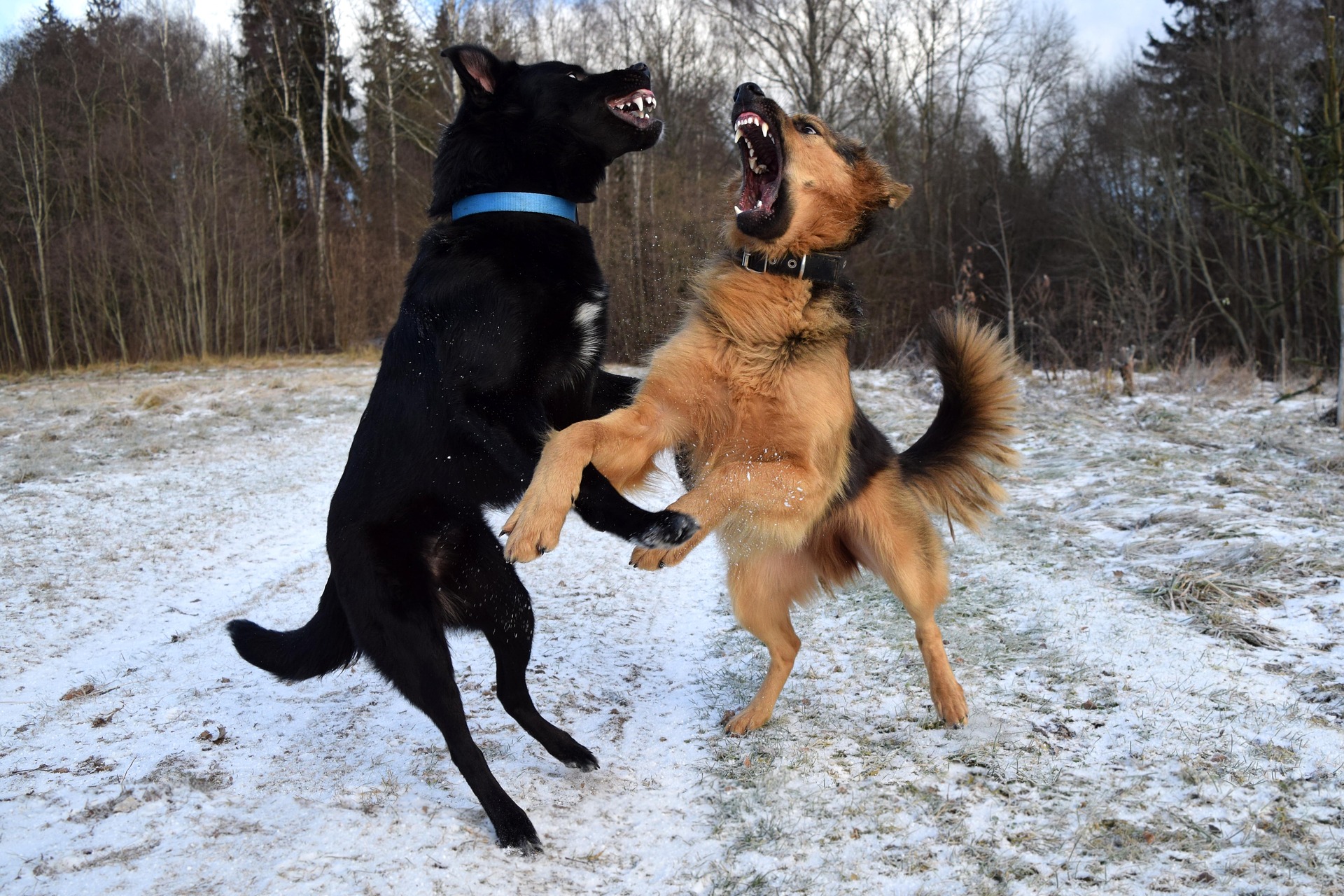
Desensitization
Desensitization can be used to diminish emotional responses to certain stimuli via repeated exposure.
Again, this isn’t a training technique that should be implemented without professional assistance if your dog’s aggression is severe or unpredictable.
You’ll first need to establish your dog’s ‘threshold’ – i.e., how close they can get to their trigger before displaying aggression.
During the early stages of the training, it’s vital you respect the threshold.
Let’s take the example of a dog that’s aggressive towards other dogs on walks.
First of all, work out how close you can get to another dog without triggering any unwanted behaviors.
Next time you go for a walk, take along a bag of your dog’s very favorite treats. Once another dog approaches, start dishing them out as quickly as possible. Keep going until the other dog is out of sight.
Keep practicing, all the while being careful to maintain your dog’s threshold.
The first time a dog approaches the edge of the threshold without eliciting any kind of reaction from your dog, you can start to gradually reduce the threshold.
This needs to be done in baby steps – expecting to go from 20 feet to 2 feet overnight is asking for trouble.
Once your dog is able to remain calm when another dog walks directly by, you’re there.
Final Thoughts
Euthanasia is a decision that no dog owner takes lightly.
While the decision is yours, please know you’re not alone.
There are resources and professionals who can help you weigh up the factors, run through the options, and consider all of the possible alternatives.
Exhaust the options. Ask for help.
In many situations, a dog can be safely managed without compromising their quality of life.
But while it’s vital that euthanasia is considered the very last resort, it’s also crucial to understand that not every dog can be safely or happily rehabilitated.
Doing the best for your dog can sometimes mean making a very difficult choice.
